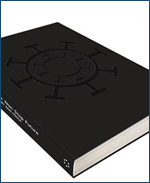The Past – A Servant of the Future
The days of "liberation" (27 April 1945) and "freedom" (15 May 1955) constitute benchmarks in the Austrian calendar of commemorative events. These dates symbolize the rebirth of both democracy and the Austrian state itself. Ever since 1955, Austrian powers of interpretation have exploited the memory of this "double foundation" of the Second Republic
The days of "liberation" (27 April 1945) and "freedom" (15 May 1955) constitute benchmarks in the Austrian calendar of commemorative events. These dates symbolize the rebirth of both democracy and the Austrian state itself. Ever since 1955, Austrian powers of interpretation have exploited the memory of this "double foundation" of the Second Republic. One of the first aims was to generate an Austrian identity by assuring Austria's position as an independent and neutral state, and by convincing those Austrians who lacked trust in it (in particular in neutrality, which was criticized by its opponents as too high a price for freedom) that it was sound policy.
A sense of togetherness, however, never exists as a given emotion, but is constructed by means of strategies of imagination; Symbols and political "liturgies" (Claude Rivière, Les Liturgies Politiques, 1988) make "the imaginary unseen bonds visible and, thus, politically effective".(Peter Berghoff, Der Tod des politischen Kollektivs, 1997, p. 16). Within the scope of historical-political "stagings", central events are re-enacted by returning to meaningful historical sites and activating their "sacral" aura. In such "repetitions" of historical events, new meanings are generated again and again – matching the new context every time – and at the same time practicing and actualizing present encodings by virtue of this iteration. So commemoration ceremonies mostly serve to construct and strengthen the sense of togetherness and to legitimize current politics.
Austria's liberation and State Treaty anniversaries have consistently presented a welcome opportunity to legitimize the internal and external politics of the time. Once the Austrian State Treaty had been signed, the reasons for "liberation", "occupation" and "freedom" were willingly omitted. The emphasis has been put on the event that reestablished Austria's sovereignty and its consequences. The "hour one" of the Second Republic eclipsed even the "zero hour" of 1945 and the previous seven to ten years to such an extent that it formed the basis of Austrian national identity. The narrative followed the "typical" rhetoric of political speeches of the postwar period. The privations of the civilian population and the commitment of the "Austrian people" in the years of reconstruction after 1945 formed a paraphrase of the victim thesis. In general, however, the reconstruction and the industriousness of Austrians after 1955, as well as Austrian neutrality and its mediation between East and West, dominated. At the same time, politicians' efforts after 1945 to get a State Treaty were assimilated with the myth of the "struggle for freedom" from 1938-1945 and interpreted as a contribution to Austria's liberation which the Allies had called for in the Moscow Declaration. With the help of such "inventions of tradition" (Eric Hobsbawm), the present, in which the population fully supported the desire of the politicians for state sovereignity, was positively represented and projected onto the National Socialist past. This narration led down the path of forgetfulness (especially concerning the involvement of Austrians in National Socialism) to a self-assigned victim status that allowed the self-portrait of an industrious and determined nation, which of its own accord had built up a new, peaceful country and now had taken its place in the community of nations recognized by the world powers.
This founding myth eroded in the 1980s and 1990s with the debate on Kurt Waldheim's service in the Wehrmacht, with the fall of the Iron Curtain and the collapse of the Soviet Union and Austria's accession to the European Community/Union. After the United Nations had designated 27 January as the International Holocaust Remembrance Day, no official ceremony for the liberation of Auschwitz took place in Austria in 2006, even though it was then holding EU presidency. Austria celebrated Mozart's 250th birthday instead and chose this date for the conference "Sound of Europe", discussing "fundamental questions as to the future of Europe, European values, identity and culture", as one could read on the official internet-site for Austria's EU-presidency (www.eu2006.at). Actually, 27 January is a reminder of the most radical antithesis to the values of democracy and human rights upon which the European Union is based. Thus, the link between Mozart's birthday and the conference discussing European values, identity, and culture seemed rather astonishing.
Despite of various debates on the Nazi past, which flared up in 2005 the multiple official commemorative activities, appeared like a huge show of Austria's "success story" – composed of historical elements like arbitrarily applicable set pieces. In this way, 15 May 2005, the 50th anniversary of the State Treaty, was turned in folklore fair with music of the last five decades, and talks with contemporary witnesses, took place in the park of Belvedere Palace, climaxing in a reenactment of the famous balcony scene – in some kind of a happy end of a didactic play: Looking backwards in order to learn from history how to cope with the future. The past is of no consequence as long as it does not provide bad examples for the future. History was been pushed aside, reduced to a legitimizing function. Therefore, it has not been important to reach a consensus about the sore spots of the past.

